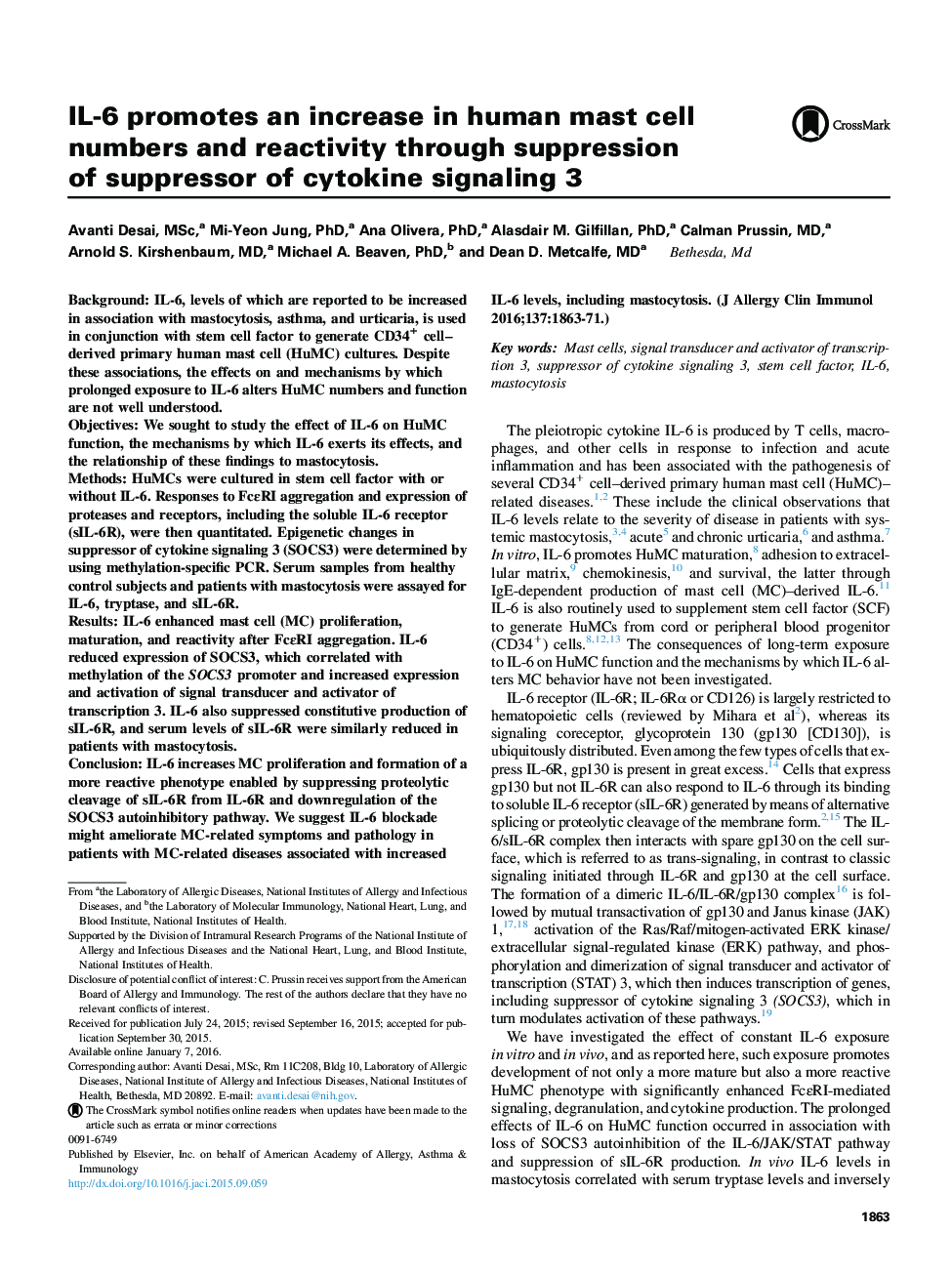| Article ID | Journal | Published Year | Pages | File Type |
|---|---|---|---|---|
| 6062527 | Journal of Allergy and Clinical Immunology | 2016 | 15 Pages |
BackgroundIL-6, levels of which are reported to be increased in association with mastocytosis, asthma, and urticaria, is used in conjunction with stem cell factor to generate CD34+ cell-derived primary human mast cell (HuMC) cultures. Despite these associations, the effects on and mechanisms by which prolonged exposure to IL-6 alters HuMC numbers and function are not well understood.ObjectivesWe sought to study the effect of IL-6 on HuMC function, the mechanisms by which IL-6 exerts its effects, and the relationship of these findings to mastocytosis.MethodsHuMCs were cultured in stem cell factor with or without IL-6. Responses to FcεRI aggregation and expression of proteases and receptors, including the soluble IL-6 receptor (sIL-6R), were then quantitated. Epigenetic changes in suppressor of cytokine signaling 3 (SOCS3) were determined by using methylation-specific PCR. Serum samples from healthy control subjects and patients with mastocytosis were assayed for IL-6, tryptase, and sIL-6R.ResultsIL-6 enhanced mast cell (MC) proliferation, maturation, and reactivity after FcεRI aggregation. IL-6 reduced expression of SOCS3, which correlated with methylation of the SOCS3 promoter and increased expression and activation of signal transducer and activator of transcription 3. IL-6 also suppressed constitutive production of sIL-6R, and serum levels of sIL-6R were similarly reduced in patients with mastocytosis.ConclusionIL-6 increases MC proliferation and formation of a more reactive phenotype enabled by suppressing proteolytic cleavage of sIL-6R from IL-6R and downregulation of the SOCS3 autoinhibitory pathway. We suggest IL-6 blockade might ameliorate MC-related symptoms and pathology in patients with MC-related diseases associated with increased IL-6 levels, including mastocytosis.
